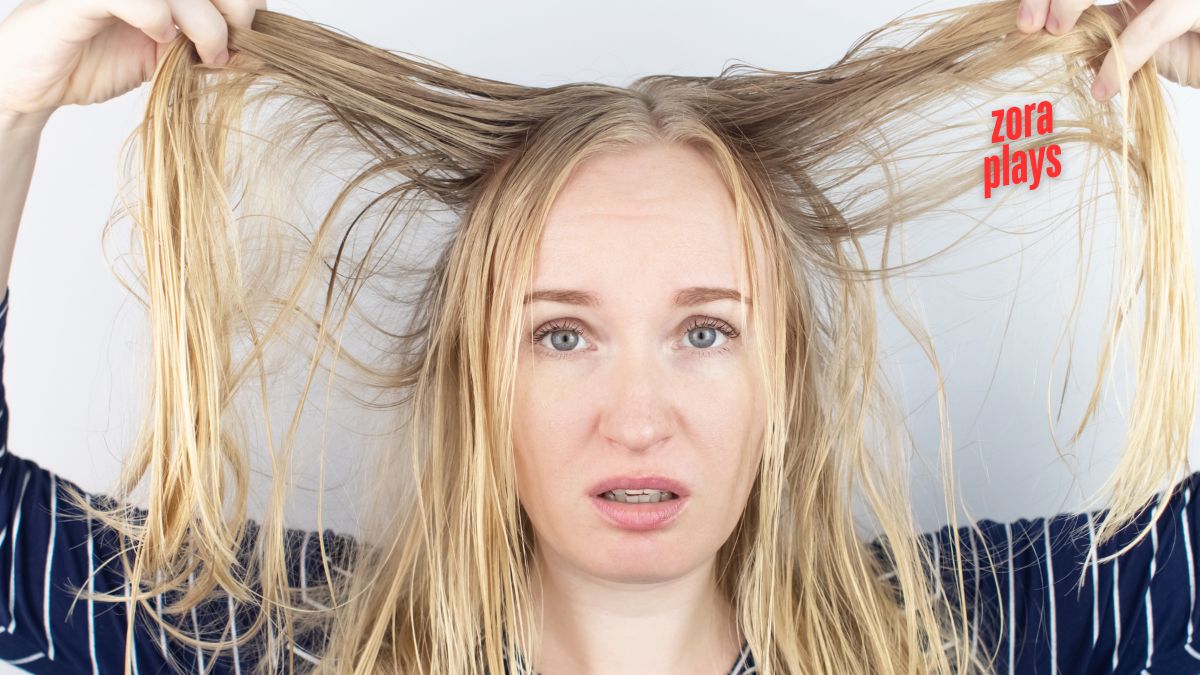Dealing with an oily scalp and dry ends can be frustrating and challenging. This common hair concern occurs when the scalp produces excess oil while the ends remain dehydrated and brittle.
Achieving a healthy balance requires a targeted hair care routine that addresses both issues without compromising one for the other.
This article shares effective solutions and practical tips to help you manage an oily scalp and dry ends for perfectly balanced hair.
What Causes an Oily Scalp and Dry Ends
Understanding the root causes of this issue is essential for finding effective solutions.
Overwashing and Harsh Shampoos
Frequent washing or using harsh shampoos can strip natural oils, causing the scalp to overproduce oil as a protective response while drying out the ends.
Heat Styling and Chemical Treatments
Regular use of heat tools and chemical treatments can damage hair shafts, leading to dry, brittle ends despite an oily scalp.
Environmental Factors
Exposure to humidity, pollution, and harsh weather can exacerbate oiliness at the roots while leaving the ends dry and lifeless.
Incorrect Product Usage
Using products not suited to your hair type, such as heavy conditioners applied to the scalp, can lead to build-up and increased oiliness.
How to Balance an Oily Scalp and Dry Ends
1. Choose the Right Shampoo and Conditioner
- Use a clarifying shampoo once a week to remove excess oil and product build-up.
- Opt for sulfate-free shampoos to gently cleanse the scalp without stripping moisture.
- Apply conditioner only to the mid-lengths and ends to avoid weighing down the roots.
2. Adjust Your Washing Routine
- Wash your hair two to three times a week to prevent overstimulating oil glands.
- Use lukewarm water for washing, as hot water can worsen dryness and oil production.
- Rinse thoroughly to ensure no product residue remains, which can contribute to oiliness.
3. Incorporate Scalp Treatments
- Exfoliate your scalp weekly using a gentle scalp scrub to remove dead skin and excess oil.
- Use scalp serums designed to regulate sebum production without drying out the skin.
4. Hydrate the Ends with Lightweight Products
- Apply leave-in conditioners or hair oils focusing on the ends to replenish moisture.
- Avoid heavy creams that can make the hair greasy or weigh down fine hair.
- Use a wide-tooth comb to distribute products evenly without causing breakage.
5. Limit Heat Styling and Protect Hair
- Minimize the use of heat styling tools, as they can exacerbate dryness at the ends.
- When using heat, always apply a heat protectant to shield hair from damage.
- Let your hair air dry whenever possible to reduce heat exposure.
6. Use Dry Shampoo Strategically
- Apply dry shampoo to the roots between washes to absorb excess oil.
- Avoid overusing dry shampoo, as build-up can clog follicles and worsen scalp conditions.
7. Protect Hair from Environmental Damage
- Wear hats or use UV-protectant hair sprays to guard against sun exposure.
- Rinse hair with clean water before swimming to prevent chlorine or saltwater from drying out the ends.
Best Ingredients for Balancing Oily Scalp and Dry Ends
Look for hair care products containing these beneficial ingredients:
- Tea tree oil: Known for its antimicrobial properties and ability to control excess oil.
- Salicylic acid: Helps exfoliate the scalp and clear build-up.
- Hyaluronic acid: Provides hydration without heaviness, ideal for moisturizing ends.
- Jojoba oil: Mimics natural sebum, balancing oil production while nourishing dry ends.
- Aloe vera: Soothes the scalp and moisturizes hair.
Tips for Long-Term Hair Health
- Maintain a balanced diet rich in vitamins like biotin, vitamin E, and omega-3 fatty acids to support healthy hair.
- Stay hydrated to keep both your scalp and hair moisturized from within.
- Schedule regular trims every six to eight weeks to prevent split ends.
- Sleep on a silk pillowcase to reduce friction and prevent hair breakage.
- Avoid tight hairstyles that can put stress on the roots and damage hair strands.
Final Thoughts
Balancing an oily scalp and dry ends requires a thoughtful hair care routine tailored to address both issues simultaneously.
By choosing the right products, adjusting your washing habits, and protecting your hair from damage, you can achieve healthier, more manageable hair. Consistency is key, and with the right approach, you can say goodbye to greasy roots and dry ends for good.
